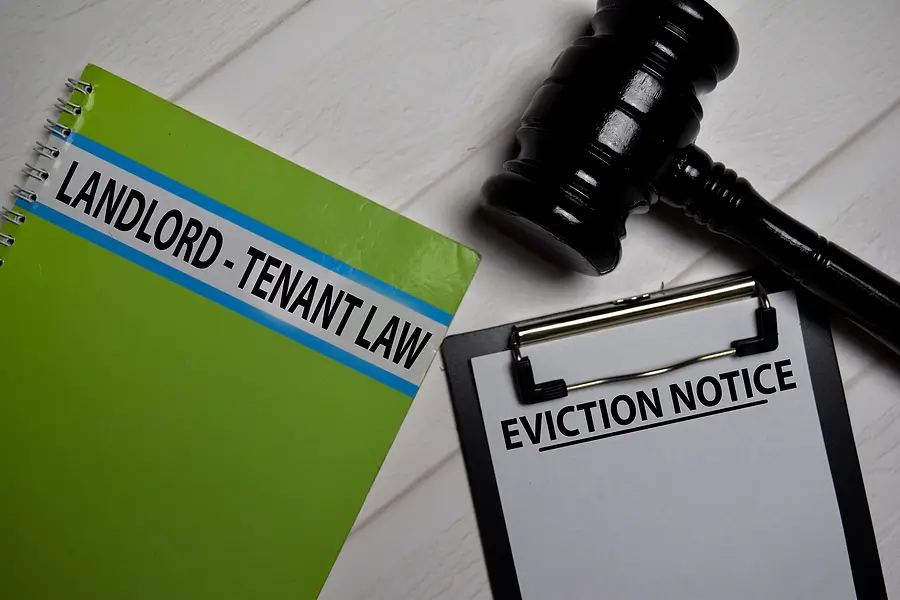2024 marks a pivotal year for California eviction laws, and whether you're an experienced landlord or a first-time property owner, it's important to stay up to date.
The increasing number of new rules, such as the California Tenant Protection Act, might make you feel overwhelmed by the mountain of legal jargon. If you don't know what you're doing, you might end up losing your eviction case in court and facing exorbitant fines.
While landlords in California face many regulations meant to safeguard renters, there is a method for complying with the law and avoiding legal trouble.
California has specific eviction rules, so let's go over them so you know how to handle the eviction process step by step.
California’s Eviction Laws and Their Effect on Your Lease Or Rental Agreement
The eviction laws of California significantly impact the conditions of your rental agreement or lease. The California Tenant Protection Act and similar legislation require landlords to adhere to more stringent standards when they create leases, particularly for "Just Cause" evictions.
You and your tenants need to clearly understand the grounds for eviction, so be sure to spell it out in the lease. There are two categories for "Just Cause" evictions.
At Fault Evictions
"At fault" means that your tenants committed a lease violation, and this includes the following reasons:
- Breach of lease terms
- Denying legal entry
- Refusal to sign a new lease with similar terms
- Crimes performed on the property or crimes aimed at the owner or a servant of the owner
- Nonpayment of rent
No-Fault Evictions
Maybe you need to remodel the rental unit, or you want to move a family member into the rental. These are allowed, but you have to be prepared to pay one month’s rent as relocation assistance in many cases. “No fault” evictions include:
- An intent to demolish or major renovation of the dwelling
- The owner follows a court order or ordinance that mandates the tenant's eviction.
- The owner or owner’s immediate family intends to move into the property
- Removal of the property from the rental market
Step-by-Step Guide for California Eviction Process
This step-by-step guide will walk you through the eviction process, ensuring you follow all the procedures to protect your rental investment and legally regain possession of your property.
Step 1: Written Notice
An eviction or termination notice is the first step. When rent is late, for instance, you could send a notice demanding payment or asking the tenant to vacate the premises. Make sure this notice follows the exact guidelines set out by California law.
Types of Eviction Notices in California
- 3-day Notice to correct the violation or vacate
- 3-day Notice to pay rent or vacate
- 30-day or 60-day Notice before the end of the lease
- 90-Day Notice for subsidized housing
Step 2: Filing an Eviction Lawsuit
If the tenant doesn’t respond or comply with the notice, you’ll move to file an unlawful detainer lawsuit. This is the official legal process for evicting a tenant. You’ll need to fill out court papers and make sure they’re properly served to the tenant.
Preparing Evidence for Eviction Hearing in California
- Document everything: To win your case, you need these records to show the court. If there is a disagreement, your eviction request will be significantly prejudiced if you do not provide enough documents and accounting reports.
- Evidence for nonpayments: Documents such as correspondence, leases, payment histories, and return slips are crucial pieces of evidence to present to a court in the case of a rent dispute.
- Evidence for lease violations: Proving a tenant's eviction on grounds like noise complaints, unauthorized pets, or property damage requires proof from various sources, including the lease itself, photographs, surveillance footage, and videos.
Step 3: Going to Court
Now comes the court date. If you’ve done everything by the book, you could win the lawsuit and get a default judgment if the tenant doesn’t appear. But sometimes, tenants have a rebuttal, so be prepared for that, too.
Step 4: Tenant Removal
Once you’ve won in court, it’s time for the tenant to go. If they don’t move out voluntarily, you’ll need to involve law officers to remove them forcibly. Don’t worry, though — that’s rare. Most tenants leave once they lose in court.
Common Issues Landlords Face During Evictions
Even with everything done right, the eviction process could be messy. Here are some of the things that can go wrong during the procedure, so make sure to take note of these, too:
- Incorrect forms or notices: Even a minor mistake on your eviction notice or court forms can cause delays. Double-check everything!
- Tenant’s belongings left behind: What happens if the tenant leaves their stuff? You can’t just toss it out. There are specific California laws about how you handle a tenant’s personal property after they’ve been evicted.
- Illegal activities: If a tenant is involved in criminal activity, you need to document it thoroughly to have strong grounds for eviction.
How to Legally Terminate a Lease in 2024
If your tenant isn’t paying rent or they’ve brought in an unauthorized pet, you’re well within your rights to terminate the lease. But it’s not as simple as kicking them out.
Clear terms in your lease agreement
Always make sure your lease agreement meticulously specifies what’s allowed and what isn’t. That way, when they violate those terms, you’re on solid legal footing.
Termination notice requirements
For month-to-month tenants, a 30-day or 60-day notice is typical. If they’re on a fixed-term lease, things get a bit more complicated, but the idea is the same — you need to follow state guidelines for the notice period.
What Happens After You Win the Eviction Case?
Winning in court is great, but the process doesn’t stop there. Once the tenant is gone, you’ll need to assess the condition of the unit. If there’s damage, you can use the security deposit to cover repairs. Moreover, winning in court doesn’t always mean you’ll get the rent you’re owed. You might need to take further legal action for collecting unpaid rent.
Eviction Stress? Not Anymore! Let Us Handle the Entire Process
Being a landlord in California can feel like walking a legal tightrope, but understanding the California eviction process is your safety net.
When it comes to protecting your rental investment, HBR Rentals Eviction Management services are designed to shield you from the stress of the eviction process. If a tenant needs to be removed, we take care of everything — from serving notices to recovering possession of your property — so you don’t have to worry about a thing.
Plus, we make it a priority to re-rent your property quickly, keeping your rental income steady!
We handle all the legal aspects, including pursuing eviction actions, collecting unpaid rents, and ensuring you regain control of your property in your name.
Whether you're in Tracy, Mountain House, Manteca, or surrounding areas like Livermore and Pleasanton, we’ve got you covered. We make the eviction process as smooth as possible for landlords in San Ramon, Dublin, Lathrop, and more.
Get started with a FREE PROPERTY CONSULTATION today and let us take the stress off your plate!


